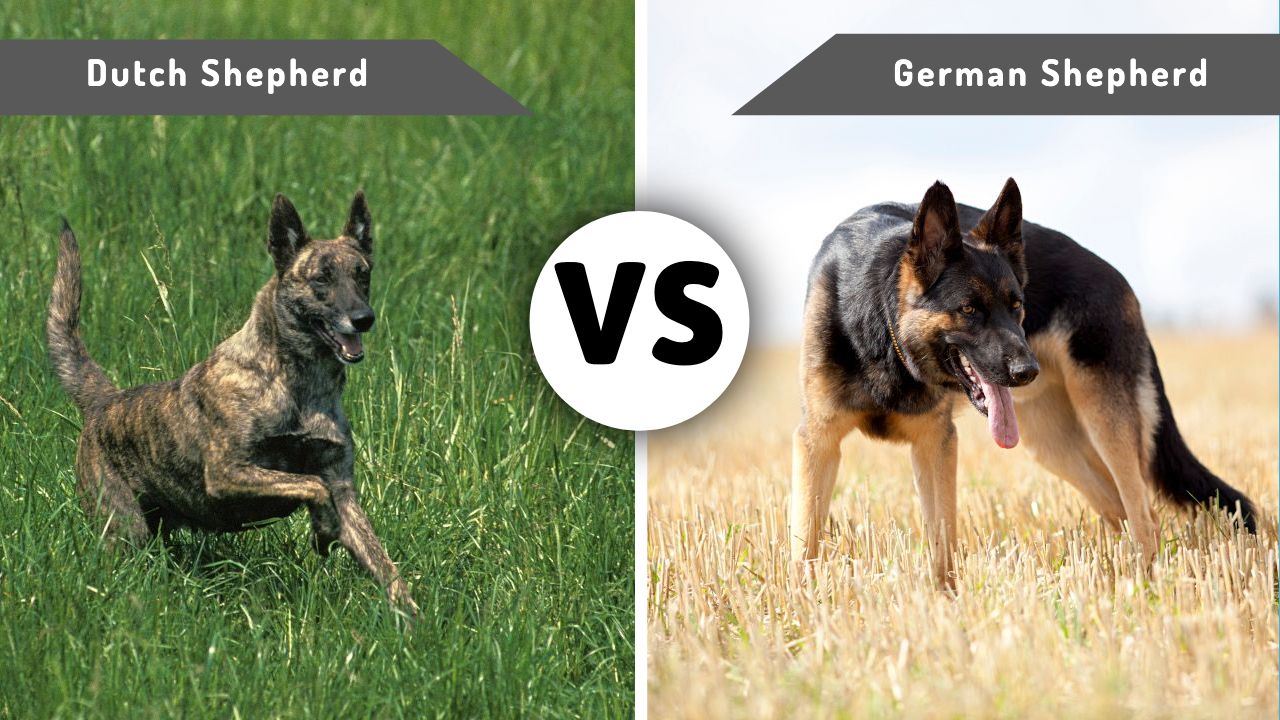
As dog enthusiasts, we often find ourselves drawn toward the majestic and intelligent shepherd breeds. Among them, the German Shepherd and the Dutch Shepherd stand out as popular choices for families, working roles, and even dog shows.
The German Shepherd, with its striking looks, loyal nature, and versatile skill set, has long been a favorite choice for many. These dogs are known for their intelligence, work ethic, and protective instincts.
However, another shepherd has been steadily gaining recognition – the Dutch Shepherd. Originally a herding dog in the rural Netherlands, this breed shares many traits with the German Shepherd but also offers unique attributes.
From their origins and physical traits to their temperament and health considerations, we’ll explore every aspect of these breeds.
Whether you’re considering welcoming a German or Dutch Shepherd into your home or you’re simply intrigued to know more about these beautiful dogs, this comprehensive comparison will provide you with a wealth of knowledge.
Let’s dive into the world of German Shepherds and Dutch Shepherds and discover what makes them both unique and similar.
You May Also Like: German Shepherd Price: How Much Are They?
| BREED COMPARISON | ||
|---|---|---|
| Dutch Shepherd | German Shepherd | |
| Weight | 40 - 75 pounds | 50 - 90 pounds |
| Height | 21.5 - 24.5 inches | 22 - 26 inches |
| Size | Medium to large | Medium to large |
| Temperament | Intelligent, athletic, hardworking | Intelligent, loyal, courageous |
| Trainability | 4.0 out of 5.0 stars4.0 | 4.0 out of 5.0 stars4.0 |
| Energy Level | 5.0 out of 5.0 stars5.0 | 5.0 out of 5.0 stars5.0 |
| Life Expectancy | 11 - 14 years | 7 - 10 years |
| Shedding | 3.0 out of 5.0 stars3.0 | 5.0 out of 5.0 stars5.0 |
| Hypoallergenic | No | No |
| Puppy Costs | $1,000 - $2,500 | $800 - $10,000 |
| Suitable For | Dutch Shepherds are highly adaptable dogs that can do well in various living situations as long as their physical and mental exercise needs are met. They can adjust to both city and country living, and they can live in apartments if provided with adequate exercise. | German Shepherds, while being larger dogs, can also adapt to various living environments provided they receive plenty of physical and mental stimulation. They can live in apartments as long as they get ample daily exercise. |
Dutch Shepherd vs. German Shepherd: Origins and History
Origin of Dutch Shepherd
The Dutch Shepherd, or Hollandse Herdershond as it’s known in its native Netherlands, traces its origins back to the country’s rural regions during the 1800s. Initially bred as herding dogs, they were utilized on farms to manage livestock.
What made Dutch Shepherds unique was their role as jack-of-all-trades on the farm. They not only herded cattle but also kept farms free of pests and pulled carts loaded with milk or produce to local markets. They were recognized for their adaptability, hardworking nature, and loyalty.
Although not as globally known as the German Shepherd, Dutch Shepherds have found their place in various roles such as police work, search and rescue, and service dogs, thanks to their intelligence and trainability. Their loyal and friendly disposition also makes them wonderful family pets.
Origin of German Shepherd
Shifting our focus to Germany in the late 19th century, we find the origins of the German Shepherd. Developed as a herding dog, the German Shepherd, initially known as the German Shepherd Dog, was the brainchild of Captain Max von Stephanitz, a German cavalry officer. His aim was to standardize a working dog breed that possessed intelligence, speed, strength, and a keen sense of smell.
Over time, German Shepherds were recognized for their versatile working abilities that extended far beyond herding. They excelled in various roles, including search and rescue, police work, and military operations, due to their intelligence and adaptability. Today, the German Shepherd is one of the most diverse working dogs and a beloved pet across the globe.
Key Takeaway: While both the German and Dutch Shepherd breeds originated as herders and have since diversified into many working roles, they each carry unique characteristics born from their distinct histories and environments.
Comparing Physical Appearance and Characteristics
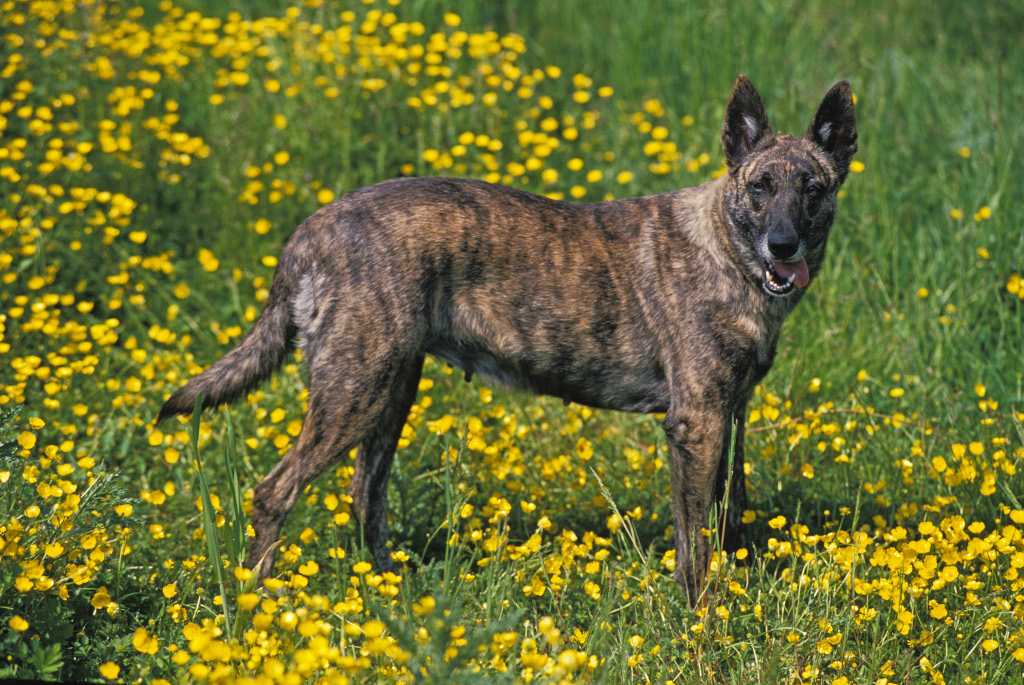
Dutch Shepherd
The Dutch Shepherd is a medium-to-large-sized, muscular dog known for its athletic build that enables it to be agile and enduring in various types of work. Male Dutch Shepherds typically stand between 22.5 to 24.5 inches tall at the shoulder, while females are slightly smaller, standing between 21.5 to 23.5 inches.
One of the distinguishing features of a Dutch Shepherd is its coat, which comes in three varieties – short, long, and rough. The most common colors are gold or silver brindle, giving the breed a distinctive and attractive appearance. Their head is wedge-shaped with almond-shaped eyes that are dark in color, expressing an intelligent and alert gaze.
German Shepherd
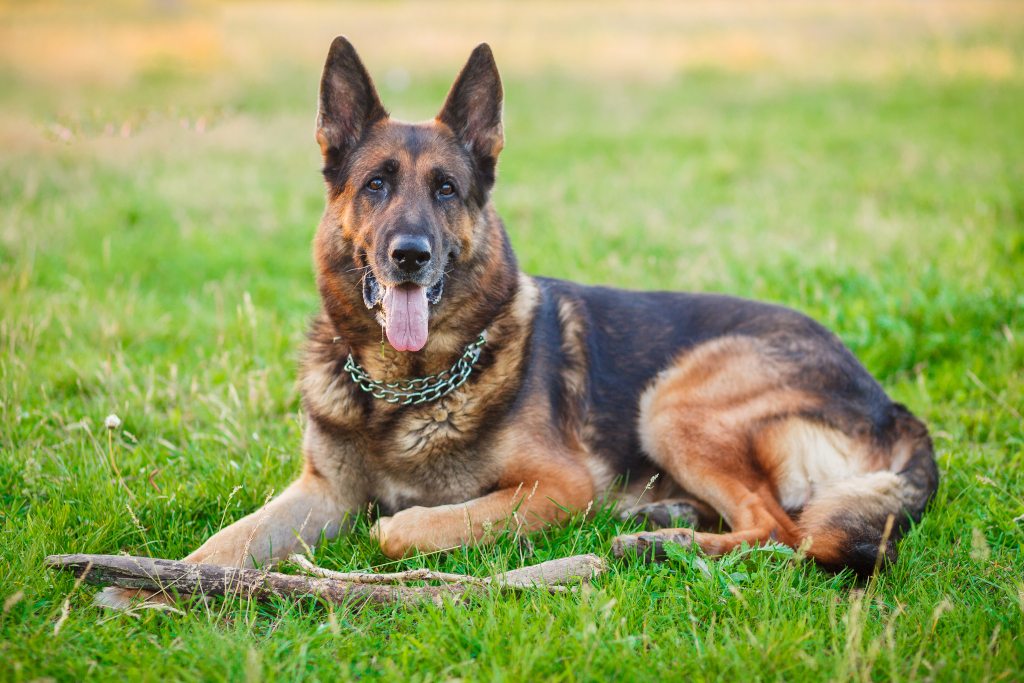
On the other hand, German Shepherds are larger, usually standing between 24 and 26 inches for males and 22 and 24 inches for females. They have a strong, muscular build that is slightly longer than it is tall. The breed is characterized by a sturdy and balanced structure, lending it both power and agility.
The German Shepherd’s coat is usually thick and medium length, with a soft undercoat. And the colors that the American Kennel Club recognizes include:
- Black and tan
- Black and red
- Black and silver
- Black and cream
- Black
- Sable
- Gray
- White
- Liver
- Blue
- Bi-color
Their face also features a strong, wedge-shaped muzzle and medium-sized, almond-shaped eyes that portray an intelligent and self-assured expression.
You May Also Like: 5 Types Of German Shepherd Dogs
Key Takeaway: When comparing the two breeds side by side, it's clear that while they share some physical traits common to shepherds, there are significant differences. The Dutch Shepherd's brindle coloring and its slightly smaller stature distinguish it from the larger, often black and tan German Shepherd.
Temperament and Behavior: A Close Look
Dutch Shepherd Temperament
Dutch Shepherds are known for their intelligent, affectionate, and reliable nature. As a breed developed to perform various tasks on a farm, they exhibit a high degree of versatility and adaptability. They are keen problem solvers and are quick to learn new tasks, making them excellent working dogs in various fields.
In a family setting, Dutch Shepherds are known to be loyal and protective. They form close bonds with their families and are known for their gentleness with children. They are also generally friendly towards other animals, especially when properly socialized.
German Shepherd Temperament
German Shepherds are recognized worldwide for their intelligence, courage, and devotion. They are highly trainable and adapt well to a variety of roles, from being employed as police dogs and search and rescue dogs to being loyal family companions. They are known for their problem-solving capabilities and their eagerness to work.
In a home setting, German Shepherds are incredibly loyal and protective. They can be aloof with strangers but warm up once they understand there’s no threat. German Shepherds are great with children and can get along well with other pets if properly introduced and socialized.
Key Takeaway: Both Dutch and German Shepherds have proven their versatility in work and their loyalty in family settings. Dutch Shepherds might be a bit more adaptable due to their history as farm dogs with varied responsibilities, while German Shepherds might exhibit a bit more protective instinct, given their use as guard dogs. Both breeds require early and consistent socialization to ensure they are well-rounded and can adapt to various situations.
Training and Exercise Needs
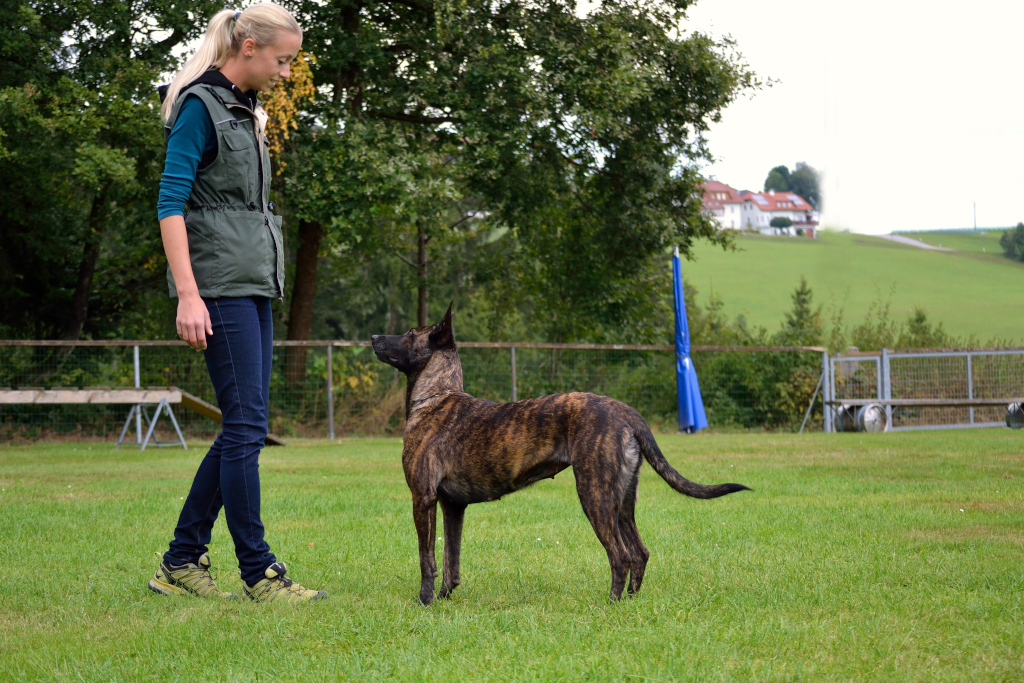
Dutch Shepherd
Given their origin as working farm dogs, Dutch Shepherds have high energy levels and require plenty of physical exercises and mental stimulation. Activities can range from long walks, hikes, jogs, running alongside a bike, and play sessions to more structured tasks like agility training, obedience trials, or herding events.
When it comes to training, Dutch Shepherds are known for their intelligence and eagerness to please. This makes them relatively easy to train, but as with training all dogs, it’s vital to use positive reinforcement techniques, like clicker training. Also, early socialization and exposure to different environments, people, and situations are essential to help them grow into well-adjusted adults.
You May Also Like: Guide to Building a Dog Run in Your Own Backyard
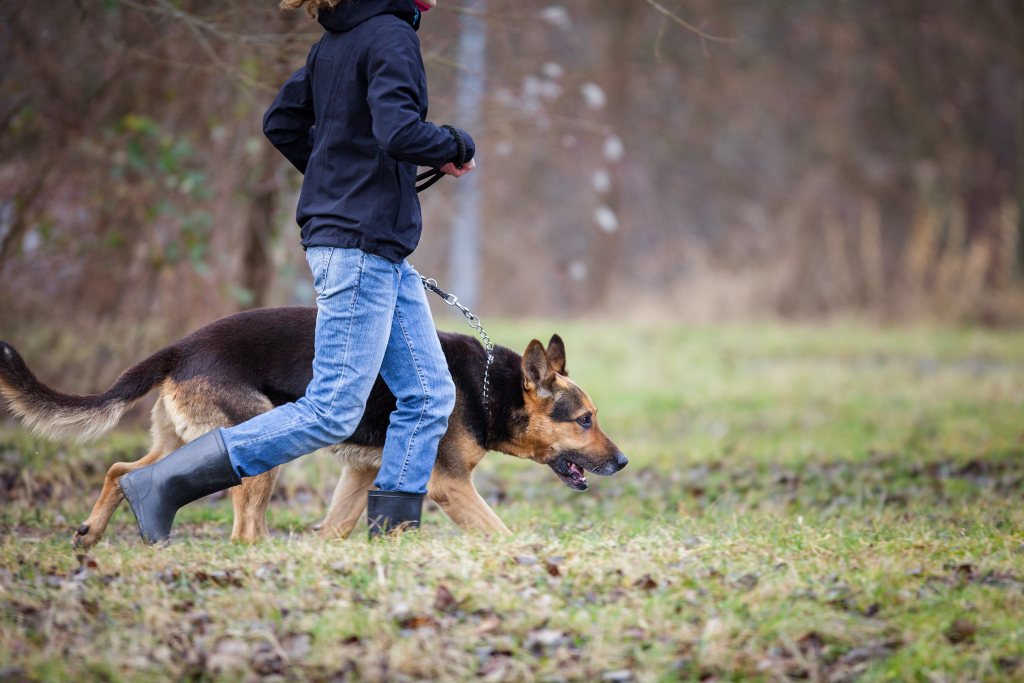
German Shepherd
The German Shepherd breed, similarly, has high energy levels due to their working dog lineage. Regular exercise is a must for this breed, which can include walks, runs, playtime, and activities like obedience, tracking, or agility trials. Mental stimulation is equally important to keep their sharp minds engaged.
Training a German Shepherd can be a rewarding experience as they are highly intelligent and eager to learn. They respond well to positive reinforcement training methods. Just like Dutch Shepherds, early and continuous socialization is key to ensuring German Shepherds become balanced and adaptable adult dogs.
You May Also Like: 7 Types of Dog Training Methods: Which One Is Best for You?
Key Takeaway: Both the Dutch Shepherd and German Shepherd are active, intelligent breeds that thrive with plenty of physical exercises and mental stimulation. They are highly trainable, and positive reinforcement techniques work well with both breeds. You'll also want to focus on early socialization to help them adjust well to different situations.
Common Health Issues and Average Lifespan
Dutch Shepherd
The Dutch Shepherd is generally a healthy and robust breed, with an average lifespan of 11 to 14 years. However, like all breeds, they can be prone to certain health conditions. Common Dutch Shepherd health issues include hip and elbow dysplasia, thyroid disorders, and eye conditions like Progressive Retinal Atrophy (PRA) and pannus.
Regular vet check-ups and a healthy diet and lifestyle can go a long way in preventing or managing these conditions. As potential Dutch Shepherd owners, it’s also important to ensure that puppies are from reputable breeders who prioritize the health of their dogs.
You May Also Like: My Dog Won’t Sleep at Night
German Shepherd
On the other hand, German Shepherds have an average lifespan of 7 to 10 years. They are also generally healthy but can be prone to specific genetic health conditions. These include hip and elbow dysplasia, degenerative myelopathy, and bloat, also known as gastric dilatation-volvulus (GDV).
Like Dutch Shepherds, regular veterinary care, a balanced diet, and a healthy lifestyle are critical in promoting overall health. Additionally, buying a German Shepherd puppy from a responsible, reputable breeder who conducts necessary health screenings can help ensure the healthiest possible pup.
You May Also Like: Why Do Dogs Chew Their Paws?
Key Takeaway: Both Dutch Shepherds and German Shepherds, while generally healthy breeds, can be susceptible to similar health issues, notably hip and elbow dysplasia. Dutch Shepherds tend to have a slightly longer lifespan than German Shepherds.
Diet and Nutritional Requirements: Dutch Shepherd vs. German Shepherds
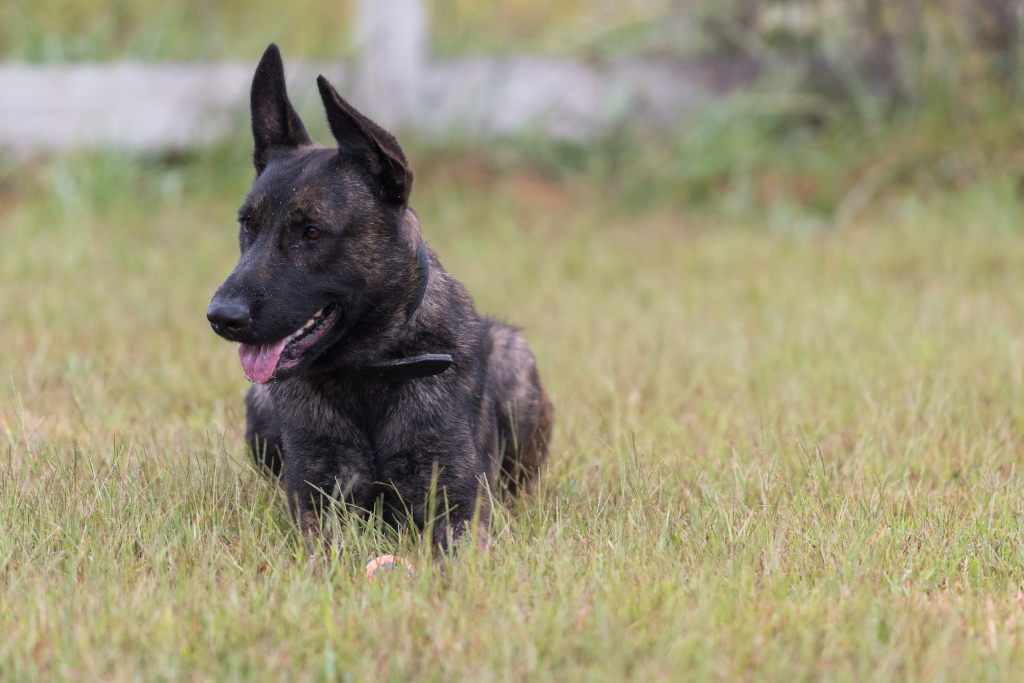
Dutch Shepherd
Dutch Shepherds, given their high activity levels, require a diet that can fuel their energy. They thrive on high-quality, balanced dog food that’s rich in proteins and followed by healthy fats and complex carbohydrates.
Whether you opt for commercial dog food or a home-cooked diet, it’s important to ensure that it provides all the necessary nutrients for your Dutch Shepherd’s overall health and well-being.
Their diet should include good sources of lean protein like chicken, beef, or fish, which help in muscle development and repair. Fats provide energy and help keep their skin and coat healthy, while carbohydrates give them the energy for their active lifestyle.
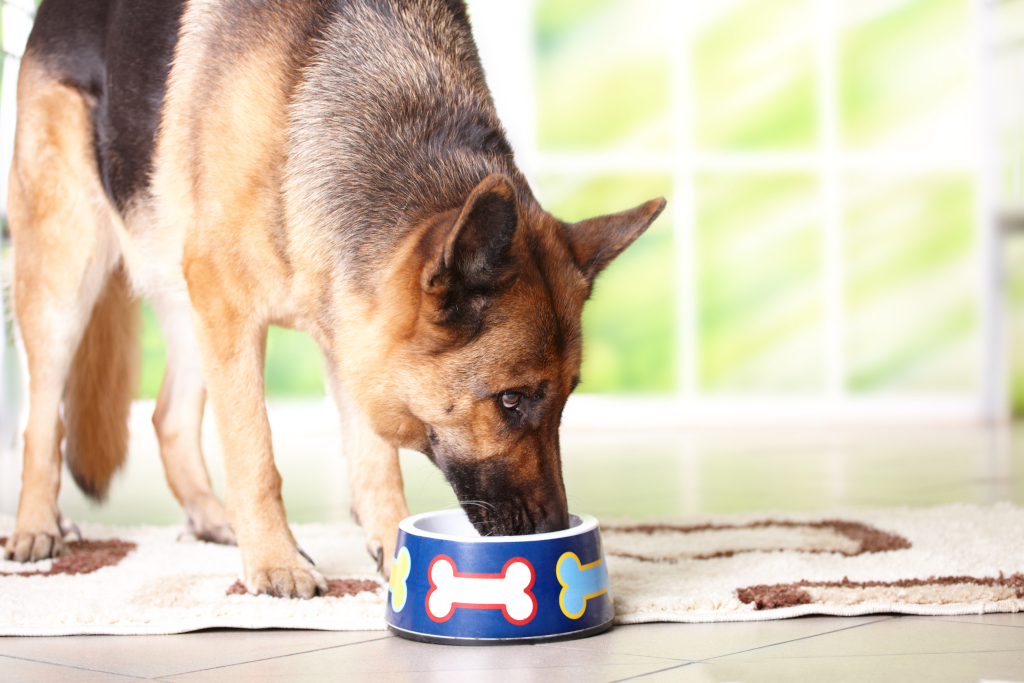
German Shepherd
German Shepherds, being a larger and equally active breed, also require a well-balanced, nutrient-dense diet high in proteins. They benefit from high-quality commercial dog food specifically designed for large breeds or a vet-approved home-cooked diet that meets their nutritional needs.
Proteins are vital for muscle growth and maintenance and should form a significant part of their diet. Healthy fats are essential for energy and for maintaining a healthy coat and skin. Carbohydrates provide them with the energy they need for their high activity levels.
And since German Shepherds are at risk of bloating, they should have smaller, more frequent meals instead of one large meal per day.
You May Also Like: Why Won’t My Dog Eat?
Key Takeaway: Both Dutch Shepherds and German Shepherds, due to their high energy and activity levels, require diets that are rich in proteins. However, the exact nutritional needs can vary based on the individual dog's size, age, activity level, and health status. If in doubt, consult with a vet. Regular monitoring and adjustments are necessary as changes in lifestyle or health status can affect dietary needs.
Grooming Needs: Dutch Shepherds vs. German Shepherds
Dutch Shepherd
As mentioned earlier, Dutch Shepherds have three types of coats – short, long, and rough – and each type has slightly different grooming needs.
Short-coated Dutch Shepherds require minimal grooming. They only need to be brushed once every week. On the other hand, long-coated Dutch Shepherds need a little more attention and must be brushed at least two or three times a week to prevent matting and tangling.
Rough-coated Dutch Shepherds are the lowest maintenance of the three types and only need to be combed once a month and occasional hand-stripping to remove dead hair from their coats.
Regardless of coat type, regular ear cleaning, nail trims, and teeth brushing should also be part of their grooming routine.
You May Also Like: Top-Rated Dog Paw Cleaner
German Shepherd
German Shepherds have a thick double coat that sheds throughout the year and heavily during shedding seasons, typically in the spring and fall. Therefore, they require regular grooming to keep their coats healthy.
Ideally, they should be brushed twice or thrice a week, and more frequent brushing may be required during shedding seasons. Using a deshedding tool can help remove loose undercoat hair and reduce the amount of hair around your home.
Just like Dutch Shepherds, regular ear cleaning, nail trimming, and teeth brushing are also essential parts of a German Shepherd’s grooming routine.
You May Also Like: Top-Rated Dry Dog Shampoo
Key Takeaway: Both Dutch Shepherds and German Shepherds require regular grooming to maintain their coat health and overall hygiene. Dutch Shepherds, depending on their coat type, may need slightly less frequent brushing than German Shepherds. Regular ear cleaning, nail trimming, and teeth brushing are essential grooming routines for both breeds.
German Shepherd vs. Dutch Shepherd: Ideal Homes and Owners
Dutch Shepherd
Dutch Shepherds are highly adaptable dogs that can do well in various living situations as long as their physical and mental exercise needs are met. They can adjust to both city and country living, and they can live in apartments if provided with adequate exercise.
They are very family-oriented and prefer to be included in household activities. They are comfortable living indoors and should not be left outside for extended periods.
Due to their strong bond with their families and their need for human companionship, they are not dogs that should be left alone for long periods. If left alone without enough exercise and stimulation, they can develop destructive behaviors out of boredom or anxiety.
You May Also Like: How to Stop Destructive Behavior in Dogs
German Shepherd
German Shepherds, while being larger dogs, can also adapt to various living environments provided they receive plenty of physical and mental stimulation. They can live in apartments as long as they get ample daily exercise.
These dogs also thrive when included in family activities and should not be left outside for long periods. They prefer to be with their human families and can become distressed if left alone for extended periods.
German Shepherds are known for their protective nature, and they can be wary of strangers. Socialization from a young age is crucial to ensure they grow up to be well-adjusted adult dogs.
You May Also Like: How to Stop Puppy Biting
Key Takeaway: Both the German Shepherd and Dutch Shepherd are adaptable dogs that can thrive in various environments, whether that's a city apartment or a country home. However, their adaptability is contingent upon their needs for physical exercise and mental stimulation being met. They are both family-oriented breeds that should not be left alone for extended periods. Socialization and integration into family activities are key to the happiness and well-being of both these breeds.
Final Verdict: Dutch Shepherd vs. German Shepherd
In conclusion, both Dutch Shepherds and German Shepherds make excellent working dogs and family pets for the right households. Both breeds are intelligent, loyal, and adaptable. They share similar grooming needs, dietary requirements, and exercise needs.
The choice between a Dutch Shepherd and a German Shepherd will likely come down to personal preference, as both breeds have plenty to offer.
It’s essential to consider your living situation, lifestyle, and time commitment before deciding which breed best fits you. As always, consider adoption if it’s a possibility. There are many Dutch Shepherds and German Shepherds in shelters and rescues that are looking for their forever homes.
Remember, a dog is a long-term commitment, and regardless of the breed you choose, they will require your time, effort, and love to thrive.

